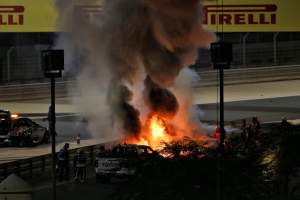Up Next

Sebastian Vettel has expressed major concern over the failure of the barrier Romain Grosjean struck in his violent Bahrain Grand Prix crash, as leading Formula 1 figures identify the questions they want answers to.
Grosjean crashed at around 137mph on the opening lap of the Sakhir race, spearing right after contact with Daniil Kvyat and hitting a metal barrier on the right-hand side of the run-off.
“If these cars are not stopped by the guardrail or that’s not enough then there obviously needs to be something stronger than the guardrail” :: Sebastian Vettel
Without TecPro or tyre barriers to protect the guardrail, Grosjean’s Haas hit it at speed and at an angle, pierced it, and the forces at play meant the front of the car – including the monocoque with the driver still cocooned – ended up embedded in the railing while the rear half was ripped off completely.
After the race, four-time world champion and Grosjean’s fellow Grand Prix Drivers Association director Vettel said “the guardrail is not supposed to fail like that” and questioned how the fireball that erupted was possible given the various precautions that exist to prevent it.
“The main thing is the guardrail failed completely,” said Vettel when asked by The Race about his concern.
“I don’t see why or how the guardrail should fail in the fashion it did so the car goes through and is stuck and rips the back part of the car off the front, which then obviously exposes the fuel tank and ignited the fire.
“I haven’t seen many images, but enough. Probably in those types of places we should have other protections next to the track.”
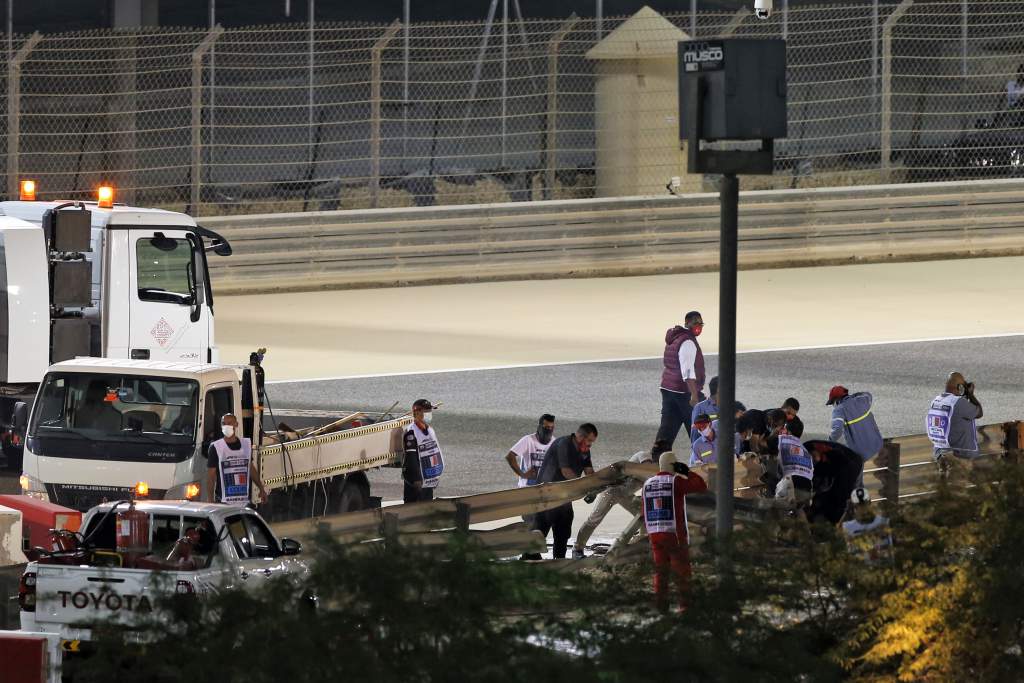
He added: “The guardrail must not fail and there’s people behind the guardrail, the marshals.
“If these cars are not stopped by the guardrail or that’s not enough then there obviously needs to be something stronger than the guardrail.
“That puts the guys, the marshals, voluntarily working for our safety in massive danger. That’s another point.”
A full investigation will follow Grosjean’s accident, like all crashes in major series, with the failure of the barrier likely to be a key question mark.
Vettel’s concern was matched by other leading F1 personnel and the priority should be to ascertain whether it is simply unrealistic to expect a barrier to more efficiently withstand a 137mph impact and a speculated force of more than 50g – or if something in the design or structure of the barrier was flawed.
A TecPro barrier or reinforced railing would have stood up better but the positioning of these barriers is a judgement call around the circuit given the expense of installing them.
The barrier Grosjean hit is an unusual place for a crash, perhaps the first the circuit has experienced there, as that barrier is used to guide an entry point to the track for response and recovery vehicles.
“I think the car was slightly sideways and the angle must have been so precise, like a knife going through the barrier” :: Toto Wolff
“The accident was a real shocker,” said Mercedes team boss Toto Wolff. “It’s something we haven’t seen in Formula 1 since the nineties – a car breaking in two and the fire.
“I think it was a freak accident, the angle in which he crashed into the barrier.
“I don’t think that the car was flat, I think the car was slightly sideways and the angle must have been so precise, like a knife going through the barrier.
“I didn’t think these modern barriers could split like so we need to analyse why that happens and how can we optimise the barriers in the future.
“The last accident with fire happened at Imola 30 years ago [Gerhard Berger’s 1989 crash, aftermath pictured below] and a fuel cell should always stay intact.
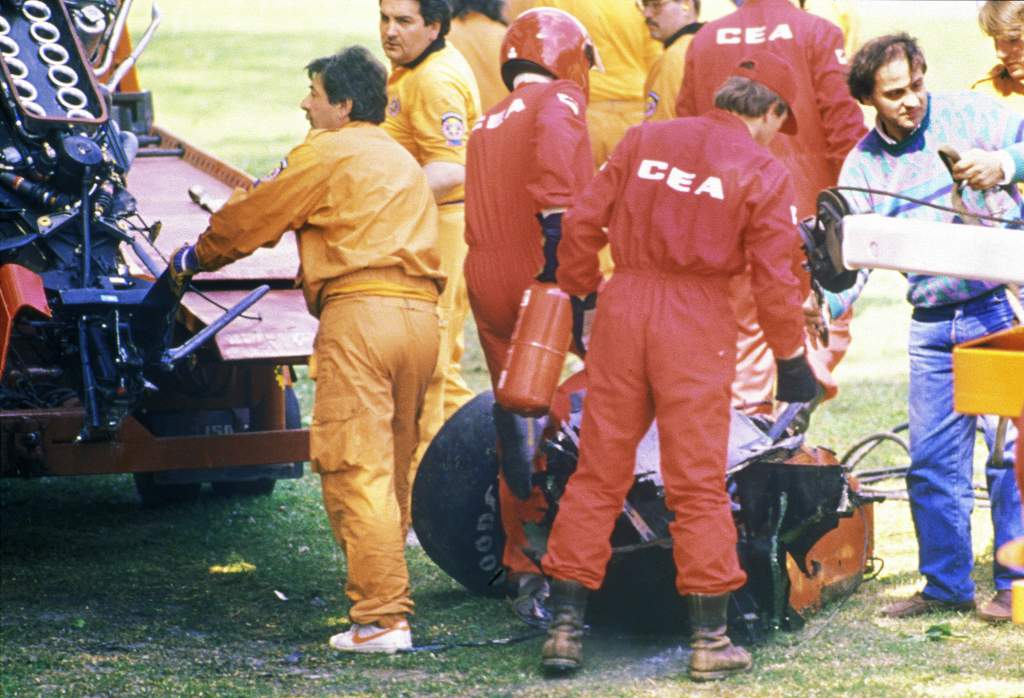
“The car breaking shouldn’t be happening, the rear should break off with the engine and not the engine staying on the chassis.
“So lots of things to learn and a lot of safety to improve and I have no doubt with all of us pulling together and the FIA with the tools they have available we’re going to improve the safety of those cars and of the racetrack even more.”
FIA race and safety director Michael Masi contested that “so much energy suddenly has to go somewhere”.
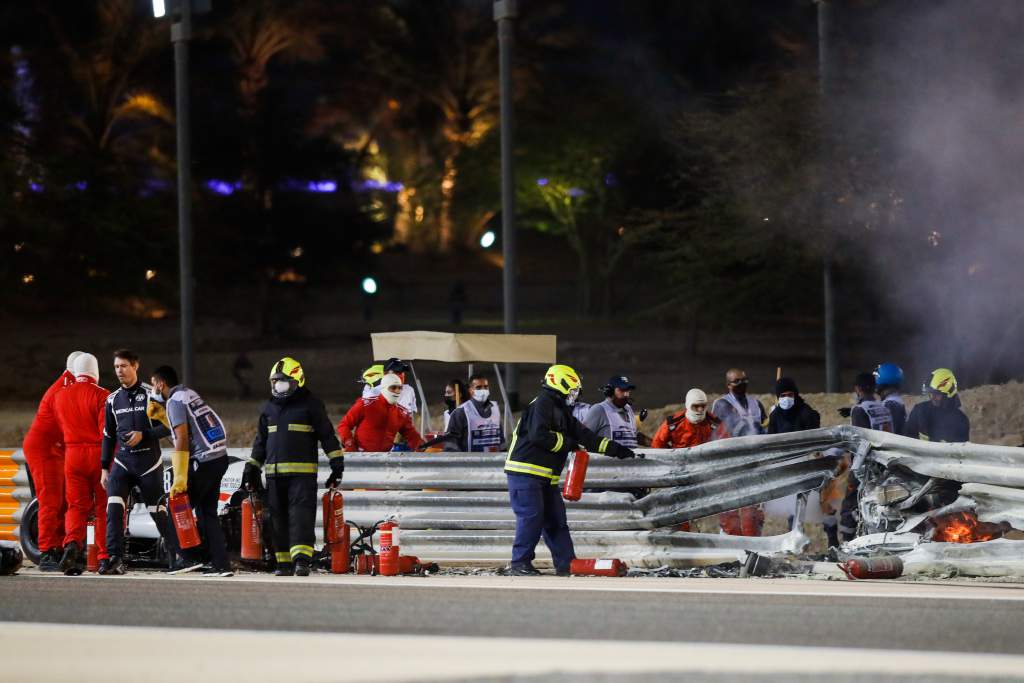
“There’s only so much you can do,” Masi said. “But as the FIA we will look at it all, undertake a full investigation of the whole incident and see what we can learn, be it car safety, be it driver equipment, be it safety features around the circuit.”
Masi said there would be no “knee-jerk” reaction over barrier integrity and was also satisfied with the swift deployment of a concrete barrier as the replacement for the destroyed railing.
What would have happened if Grosjean was not able to free himself from the wreckage as he did?
“The repair that we undertook was the most efficient repair and the best repair that we could within the situation and what we have before us,” he said.
The FIA safety department will lead the subsequent investigation, drawing in input from the single-seater department, F1 itself, the teams and their technical personnel.
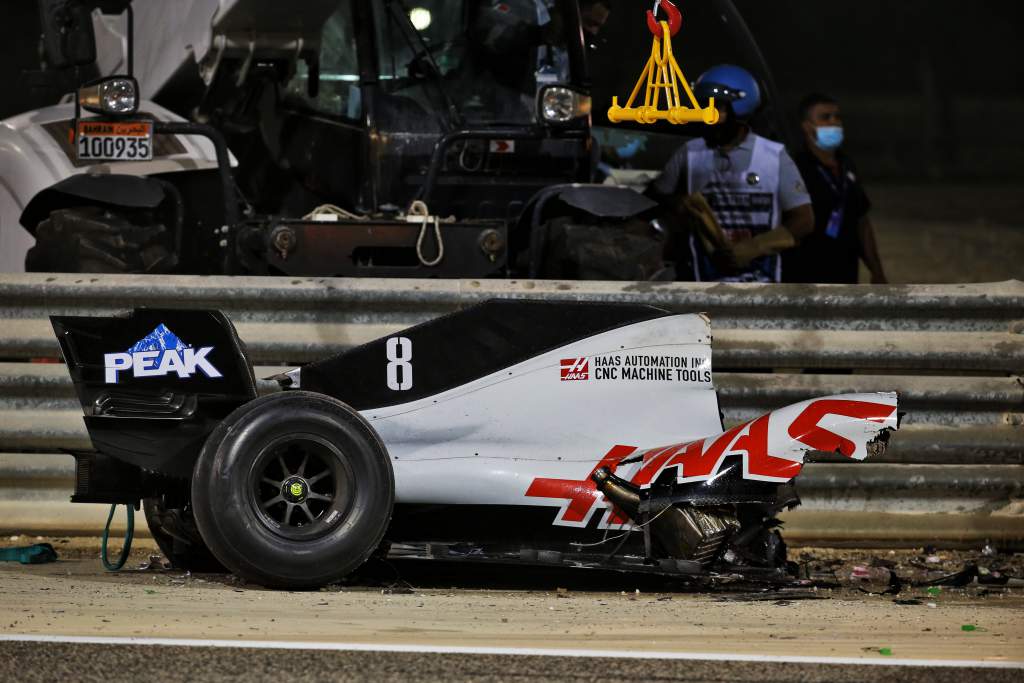
There are other concerns to address as well. Did the car break apart, as Wolff suggested, incorrectly and is that what caused the fire, something that hasn’t been seen in more than 30 years?
“I don’t know whether the fuel cell has ruptured, obviously you’ve got a lithium-iron battery in there as well,” said Red Bull team boss Christian Horner.
“I’m sure a great deal of due diligence will be done into that.”
And a less prominent, but no less important, question is what would have happened if Grosjean was not able to free himself from the wreckage as he did?
The images of medical delegate Dr Ian Roberts and medical car driver Alan van der Merwe assisting how they did add a heroic edge to the rescue but whether they could have done anything if Grosjean could not emerge from the flames under his own steam is a harrowing thought.
So the FIA will surely look at whether there was sufficient coverage to tackle the fire, because while Grosjean was able to escape it, surely it was too ferocious for anybody to properly enter the flames and extract him? Presumably the trackside works would have had to wait.

Considering these details is not a grim ‘what if?’, it’s essential.
It would be easy for the appreciation over Grosjean emerging largely unscathed – and the miracle that appears on the surface – to mean the circumstances of the incident are chalked up as a freak crash.
After all, it was a multi-stage accident that was terrifying in combination. As world champion Lewis Hamilton said: “The flames, the car breaking in two and then not knowing where the driver is, and him all of a sudden popping out in those flames…I can’t even imagine what that’s like.”
And there is a chunk of fortune involved in that the physics and geometries of the crash were on Grosjean’s side, and that may be the “guardian angel” that Wolff and Haas team boss Guenther Steiner both referred to.
However, good fortune wouldn’t have been enough without the various safety measures that came together to save Grosjean’s life.
Horner was quick to praise the huge combination of human-controlled factors that impacted the outcome: “The car, the safety cell, the halo, the fireproof Velcros, the belts, the HANS system, the extraction, the FIA crew being there within seconds, the guys fearlessly going into extract him from the car.”
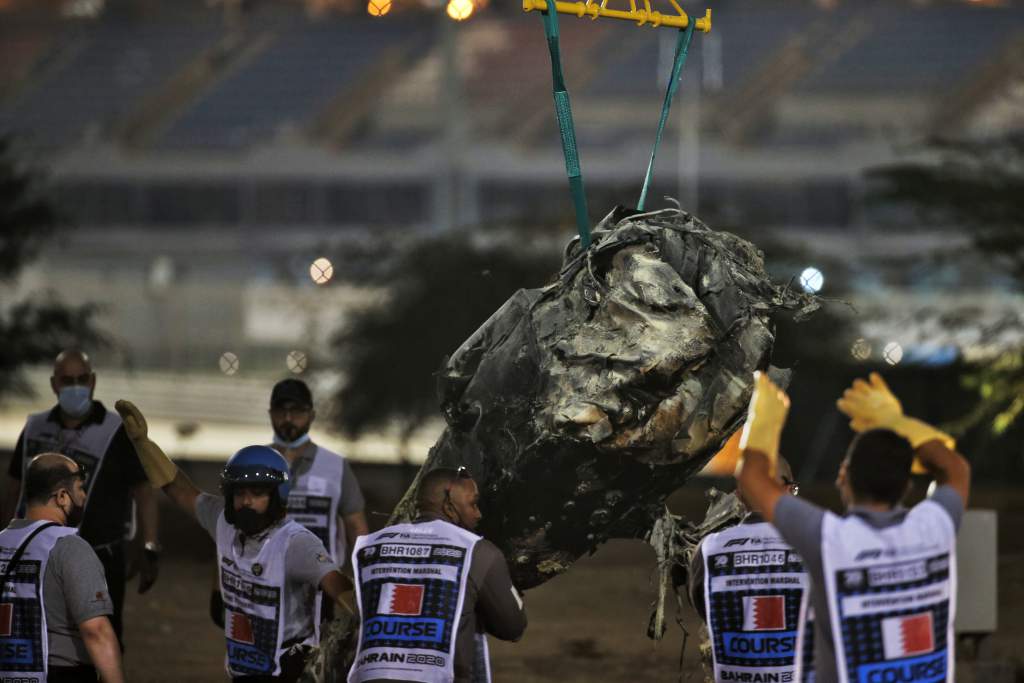
F1’s mentality of always striving to do more, especially for driver safety, will command that this is treated as a lesson to be learned from rather than a one-off fluke.
“We have a duty as the sport has always done to look at the next step,” said Ferrari sporting director Laurent Mekies, the former FIA safety director.
“You use every accident to try to learn what you can do better.
“I’m sure in the analysis the FIA will do of the crash, there will be many other small elements that even though the rescue was a huge success will be evolved for the next safety improvements for the drivers and circuits.”



